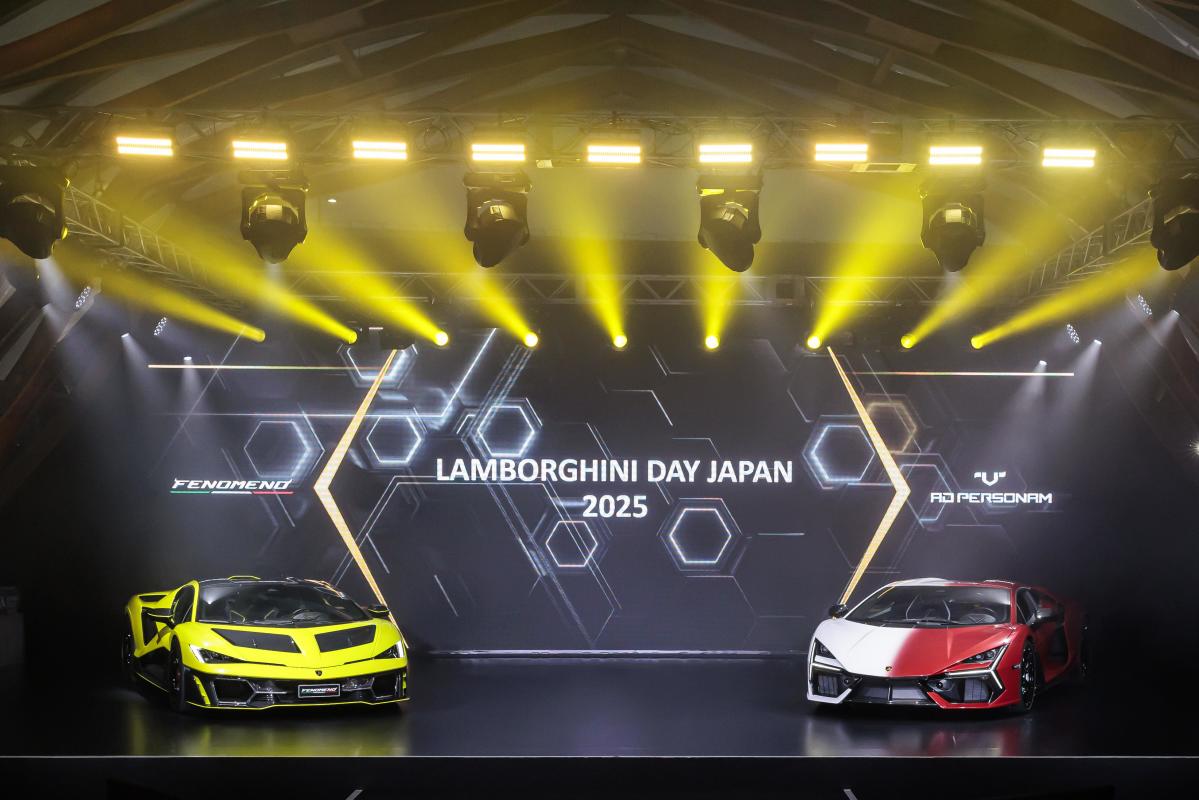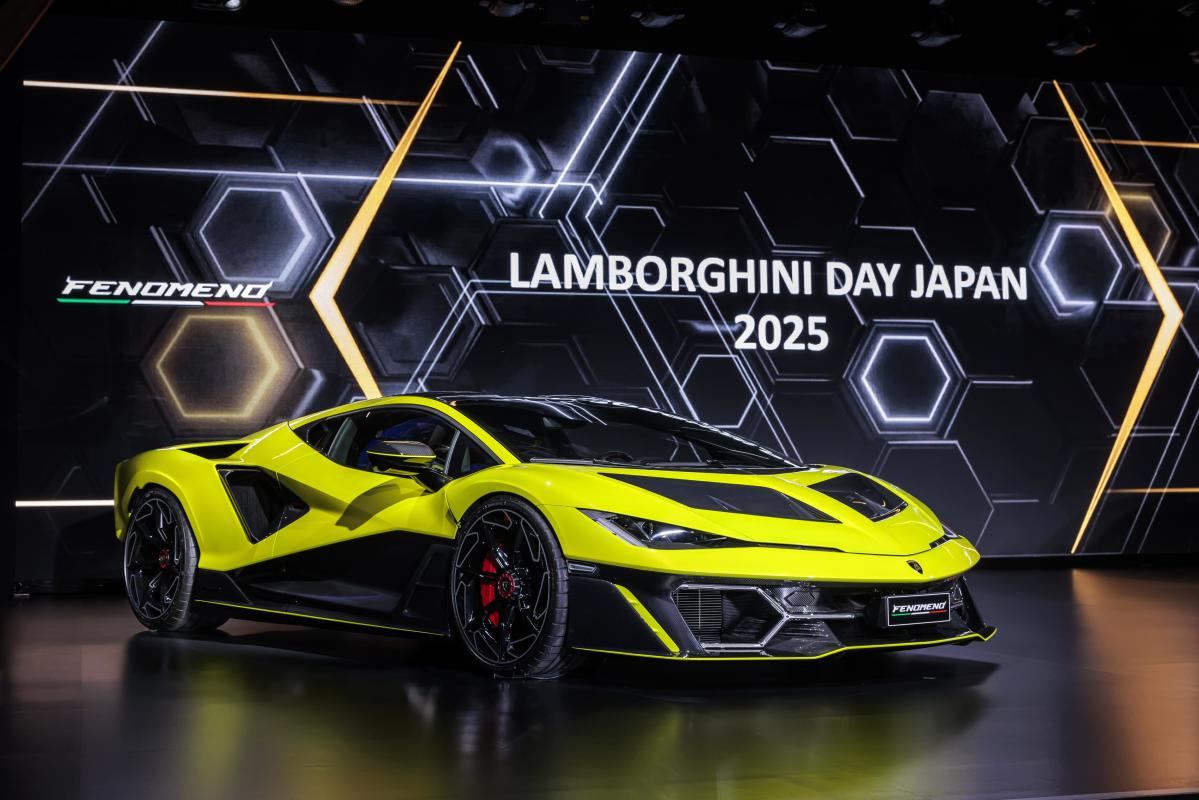Lamborghini’s Revuelto Ad Personam: A Cultural Statement or a Dangerous Divisive Symbol of Elite Consumerism?
Lamborghini has always stood as a beacon of automotive prowess, encapsulating the pinnacle of engineering and design. The recent Lamborghini Day Japan 2025 showcased this legacy, creating a striking contrast between the brand’s heightened cultural significance and the stark realities of consumerism in the luxury car market. A spotlight was cast on the one-of-a-kind Lamborghini Revuelto Ad Personam, designed specifically to celebrate Japanese culture. This bold move speaks not only to the brand’s commitment to personalization but also raises questions about the broader implications of luxury brands engaging in cultural storytelling.
The Revuelto Ad Personam exemplifies Lamborghini’s personalization ethos, where customers can tailor their vehicles to reflect their identities or, in this case, a nation’s cultural nuances. The car features a unique paint finish that transitions from Bianco Asopo (white) at the front to Rosso Khonsu (red) at the rear, symbolizing Japan’s national colors, which are rich with meaning—purity and energy. This design choice is emblematic of a trend where luxury brands are increasingly using cultural narratives to enhance their appeal and legitimacy in markets beyond their home countries. Such strategies can be seen as poignant reflections of globalization, where the boundaries of culture and commerce blur.
The interior of the Revuelto Ad Personam continues this theme, with a cabin split into two distinct color halves, red for the driver and white for the passenger, a design that feels both balanced and purposeful. It’s a manifestation of craftsmanship that resonates deeply with Japanese aesthetics, which often emphasize harmony and duality. However, it also raises the question: is this a genuine homage, or is it a superficial attempt to capitalize on a lucrative market? Critics might argue that appropriating cultural symbols for profit dilutes their significance, transforming them into mere marketing tools.
Mechanically, the Revuelto Ad Personam retains the powerful 6.5-liter V12 engine, paired with three electric motors to produce a combined output of 1,001 horsepower. This impressive performance—accelerating from 0 to 60 mph in about 2.5 seconds and achieving a top speed of 217 mph—remains unchanged from the standard model. This focus on retaining performance while emphasizing design and cultural relevance is a strategic pivot for Lamborghini, showcasing their commitment to innovation in an era where electrification dominates the automotive landscape.
In stark contrast to the Revuelto, the Fenomeno, another model showcased during the event, pushes the boundaries of performance even further, limited to just 29 units globally and delivering an astonishing 1,080 horsepower. This model also features technological advancements such as next-generation carbon-ceramic brakes and 6D motion sensors, aimed at enhancing both control and driving experience. The juxtaposition of the two vehicles highlights the dual narrative that Lamborghini is crafting: one of exclusive performance and another of culturally-infused design.
Japan’s passion for Lamborghini, reflected in the turnout of over 500 enthusiasts, journalists, and owners at the event, underscores the brand’s deep-rooted connection to its audience. A parade of 100 Lamborghinis through Tokyo’s vibrant streets served as a striking visual testament to the brand’s impact on urban culture. As these cars traversed landmarks like the Kabuki-za Theater and Rainbow Bridge, they embodied the seamless integration of high-performance engineering within the fabric of a modern metropolis. This event was not merely a showcase of luxury vehicles; it was a cultural celebration, reinforcing Lamborghini’s narrative of innovation and precision.
As Lamborghini’s CEO, Stephan Winkelmann, noted, this celebration exemplifies shared values of craftsmanship and precision, but it also invites scrutiny about the ethics of luxury branding in a globalized world. The challenge lies in creating products that resonate on a personal level while remaining true to cultural integrity. The Revuelto Ad Personam, while a stunning piece of design and engineering, may also represent a more troubling side of luxury consumerism, where exclusivity and cultural homage intersect, leaving a trail of debate about authenticity and representation.
The broader implications of this event and the vehicles unveiled extend beyond automotive circles and touch upon significant societal issues. In a world increasingly divided by economic disparities, the exclusivity of luxury cars can seem out of touch with the everyday realities faced by many. The allure of high-performance vehicles often attracts critique regarding their environmental impact and the moral implications of luxury consumption. As Lamborghini embraces hybrid technology, it walks a fine line between innovation and the perception of social responsibility.
These tensions are further amplified when considering the symbolism behind luxury cars as status symbols. The Revuelto Ad Personam’s intricate design represents not just a connection to Japanese culture but also a means of elevating the owner’s status. This duality challenges consumers to consider whether their choices align with their values. In a time of environmental awareness and social justice movements, luxury brands are being scrutinized more than ever, demanding transparency and accountability.
Moreover, the cultural appropriation debate looms large, posing questions about who has the right to represent a culture and how. The Revuelto’s homage to Japanese aesthetics can be seen as a celebration, but it also risks being perceived as commodification. This dynamic places brands like Lamborghini in a precarious position where they must navigate cultural sensitivities while attempting to market their products effectively.
As the automotive industry shifts towards hybridization and sustainability, Lamborghini’s approach reflects a broader trend among luxury brands attempting to balance heritage with modern demands. The Revuelto Ad Personam is a testament to this evolution, showcasing how brands are responding to the call for cultural relevance while grappling with the implications of their marketing strategies. The potential backlash against perceived insincerity could result in significant reputational risks.
In essence, Lamborghini Day Japan 2025 was more than just a celebration of cars. It was a reflection of the ongoing dialogue between heritage, modernity, and cultural representation in a rapidly changing world. While the Revuelto Ad Personam stands as a compelling symbol of design, it also serves as a reminder that the emotional side of performance must coexist with a thoughtful consideration of cultural impact. As luxury brands continue to evolve in this hybrid era, their narratives will undeniably influence consumer perceptions and societal values. The ever-present question remains: how can brands authentically honor culture while navigating the complexities of modern consumerist landscapes?
Lamborghini brought its full hybrid lineup to Tokyo for Lamborghini Day Japan 2025, turning Ariake Urban Sports Park into a showcase of Italian engineering and design. More than 500 owners, journalists, and fans gathered for the Asia Pacific debut of the Fenomeno, the brand’s new limited-edition V12 hybrid. Yet the car that drew the most attention was a one-of-one Revuelto Ad Personam designed specifically to celebrate Japanese culture.
The Lamborghini Revuelto Ad Personam demonstrates the reach of Lamborghini’s personalization program. It introduces the company’s first longitudinal gradient paint finish, transitioning from Bianco Asopo (white) at the front to Rosso Khonsu (red) at the rear. The design references Japan’s national colors, symbolizing purity and energy, and reflects Lamborghini’s growing focus on cultural storytelling through design.
Lamborghini
Japan Inside and Out
Inside, the same theme continues. The cabin is divided into two distinct halves: red on the driver’s side and white on the passenger’s, each with contrasting stitching. Even small touches, like the Start/Stop flap and “ANIMAE” embroidery, follow the gradient concept. The result is an interior that feels balanced, thoughtful, and deeply intentional.
Mechanically, the car retains the same setup as the standard Revuelto: a naturally aspirated 6.5-liter V12 paired with three electric motors for a combined 1,001 horsepower. It accelerates from 0–60 mph in about 2.5 seconds and reaches a top speed of 217 mph or more. While the performance remains identical, this edition focuses on design, identity, and craftsmanship rather than incremental power gains.

Fast and Exclusive
The Fenomeno, meanwhile, represents Lamborghini’s pursuit of performance innovation. Limited to 29 units globally, it produces 1,080 horsepower and reaches 60 mph in 2.4 seconds, making it the brand’s most powerful V12 yet. It also debuts new 6D motion sensors and next-generation carbon-ceramic brakes to improve response and control.
For the first time, Lamborghini displayed a fully hybrid lineup in Japan, including the Revuelto, Temerario, and Urus SE. The presentation underlines the company’s transition toward electrified performance without compromising its signature driving character.
Lamborghini
Lambo Culture in Japan is Strong
The event concluded with a parade of 100 Lamborghinis through Tokyo’s streets, from Umi-no-Mori Park to the Kabuki-za Theater and across the Rainbow Bridge. The sight of the cars moving through the city underscored how seamlessly Lamborghini’s legacy of design and sound fits into modern urban culture.
“Japan has always been one of Lamborghini’s most passionate markets,” said Stephan Winkelmann, Lamborghini’s CEO. “This event reflects our shared values of craftsmanship, precision, and innovation.”
Lamborghini Day Japan 2025 was more than a brand celebration. It was a statement about how heritage, technology, and personalization can coexist in the hybrid era. The Revuelto Ad Personam stood out not just as a piece of design, but as proof that the emotional side of performance still matters.
Lamborghini




